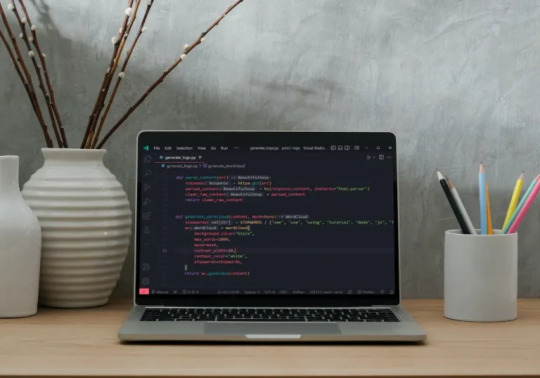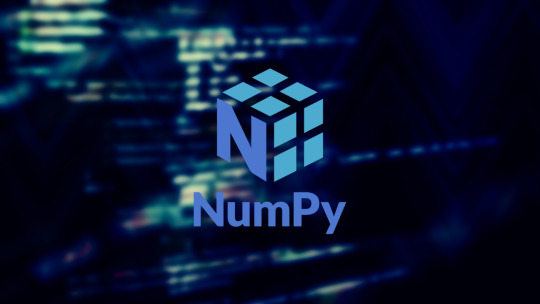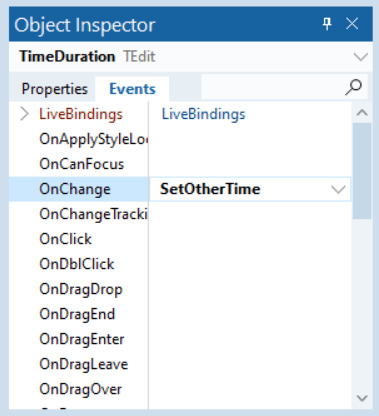Don't wanna be here? Send us removal request.
Text
Creating Intelligent Applications with Keras and Python on Windows
Make use of Python and Keras' capabilities to create clever Windows applications. Building deep learning models for applications like image recognition, natural language processing, and predictive analytics is made easier using Keras. Keras's intuitive interface makes it easy to incorporate advanced AI solutions into your Python-based Windows apps, improving both functionality and performance. Read More : https://pythongui.org/pyscripter-vs-pycharm-best-python-coding-software/
0 notes
Text
Boost Your Python GUIs with DDS (DirectDraw Surface)
Boost your Python GUIs with DDS (DirectDraw Surface) to enhance image quality and performance. DDS files allow efficient handling of textures, making them ideal for applications requiring high-quality graphics. By integrating DDS support into Python GUI frameworks like Tkinter or PyQt, you can create visually appealing and responsive interfaces, improving the overall user experience with seamless image rendering. For more information visit our website : https://pythongui.org/how-to-make-more-than-20-chatgpt-prompts-work-with-python-gui-builders-and-pillow-library/#6_ICO_Icon
0 notes
Text
Mastering Long Short-Term Memory (LSTM) Networks for AI

Long Short-Term Memory (LSTM) networks are a specialized type of recurrent neural network (RNN) designed to address the vanishing gradient problem. LSTMs use memory cells and gates to retain and manage information over long periods, making them ideal for tasks like speech recognition, machine translation, and image captioning, where long-term dependencies in data are essential. Read More : https://pythongui.org
0 notes
Text
Neural Style Transfer Algorithms | PythonGUI

Neural Style Transfer algorithms harness deep learning to combine the style of one image with the content of another, producing stunning artistic transformations. By using pre-trained convolutional neural networks, these algorithms extract key features from both the style and content images, then optimize a generated image to align with both. The result is a visually captivating blend that maintains the essence of the original content while adopting the desired artistic style. To explore more about Neural Style Transfer algorithms, check out our detailed Python GUI blog post.
0 notes
Text
DelphiFMX - An Overview | Python GUI
DelphiFMX (FireMonkey) is a cross-platform application development framework provided by Delphi. It enables developers to build high-performance, visually rich applications for Windows, macOS, iOS, Android, and Linux using a single codebase. With its support for 2D/3D graphics, responsive designs, and extensive component library, DelphiFMX simplifies multi-device app creation. For more information, visit PythonGUI.

0 notes
Text
Tkinter Window - An Overview | Python GUI
Tkinter Window refers to the main graphical user interface (GUI) window created using Tkinter, a Python library for building GUI applications. The window serves as the primary container for widgets like buttons, labels, and text boxes. It allows developers to design interactive applications with customizable layouts and user-friendly features. For more information, visit PythonGUI.

0 notes
Text
Machine Learning Algorithms - An Overview | Python GUI
Machine Learning Algorithms are computational methods used to enable machines to learn from data and improve their performance over time without being explicitly programmed. These algorithms analyze patterns, make predictions, and automate decision-making processes. Common types include supervised, unsupervised, and reinforcement learning, widely applied in industries like healthcare, finance, and technology. For more information, visit PythonGUI.

0 notes
Text
Generative Adversarial Networks - An Overview | Python GUI
Generative Adversarial Networks (GANs) are a class of machine learning models consisting of two neural networks: a generator and a discriminator. The generator creates synthetic data, while the discriminator evaluates its authenticity. Through adversarial training, GANs can generate realistic images, videos, and other data, with applications in art, deepfake creation, data augmentation, and more. For more information, visit PythonGUI.

0 notes
Text
LangChain - An Overview | Python GUI
LangChain is an open-source framework designed to simplify the development of language model-powered applications. It provides tools to build, manage, and integrate language models into workflows, allowing for seamless interaction with external data, APIs, and databases. Ideal for building chatbots, virtual assistants, and advanced NLP applications, LangChain enables developers to create intelligent, dynamic, and scalable solutions. For more information, visit PythonGUI.

1 note
·
View note
Text
Convolutional Neural Network - An Overview | Python GUI
A Convolutional Neural Network (CNN) is a deep learning architecture designed for processing structured grid data, such as images. It employs convolutional layers to automatically detect features, reducing the need for manual feature extraction. CNNs excel in image recognition, object detection, and various visual tasks, making them fundamental in applications like autonomous vehicles, medical imaging, and facial recognition. For more information, visit PythonGUI.

0 notes
Text
Chat Bot GUI - An Overview | Python GUI
A Chat Bot GUI (Graphical User Interface) provides an intuitive visual interface for users to interact with chatbots. It enhances user experience by displaying conversations in a user-friendly format, allowing easy navigation and interaction. Features often include customizable chat windows, quick response buttons, and rich media support, making it ideal for customer support, virtual assistants, and interactive applications. For more information, visit PythonGUI.

0 notes
Text
FlipChildren Method: A Guide with PythonGUI

The FlipChildren method is a function commonly used in programming frameworks or libraries, particularly in graphical user interface (GUI) development. This method reverses the order of child elements within a container or control. It allows developers to rearrange the visual hierarchy of elements within a parent control, changing the rendering order and appearance of the user interface components. If you want to learn more about the FlipChildren Method, please visit our website.
0 notes
Text
Python Delphi Ecosystem | PythonGUI

The Python Delphi ecosystem combines the power of Python programming with Delphi's robust development environment. This integration allows developers to leverage Python's versatility and Delphi's rich features for creating cross-platform applications. With Python4Delphi, developers can seamlessly integrate Python code into Delphi projects. To learn more about the Python Delphi Ecosystem, please visit our Python GUI blog post.
0 notes
Text
Best Python GUI Frameworks

Python GUI frameworks provide useful tools for developers to create graphical user interfaces for their applications. Popular frameworks like PyQt, Tkinter, and Kivy offer diverse features, from ease of use to complex customization. These frameworks enable efficient UI development, catering to various project requirements. If you want to learn more, please visit our website.
0 notes
Text
Numpy:A Powerful Python Library| Python GUI

NumPy is a vital Python library for numerical computations, offering robust tools for array operations and mathematical functions. Widely adopted in data science and engineering, NumPy optimizes computational tasks with its efficient array-based operations, making it indispensable for scientific computing and data manipulation. To learn more about the details, please visit our website.
0 notes
Text
Generative Adversarial Networks | Python GUI

Generative Adversarial Networks (GANs) are a type of deep learning model comprising two neural networks: a generator and a discriminator. The generator learns to produce synthetic data resembling real samples, while the discriminator distinguishes between generated and authentic data. Through adversarial training, Generative Adversarial Networks achieve impressive results in generating images, music, and other complex data, advancing applications in AI creativity and synthesis. To learn more about the details, please visit our website.
0 notes
Text
Object Inspector | Python GUI
In computer programming, an object inspector is a tool or feature provided by integrated development environments (IDEs) or debugging software that allows developers to examine the properties, methods, and other characteristics of objects during runtime. Object inspectors typically provide a user interface for navigating through the structure of an object, displaying its attributes and their current values. To know further information please visit our website.

0 notes